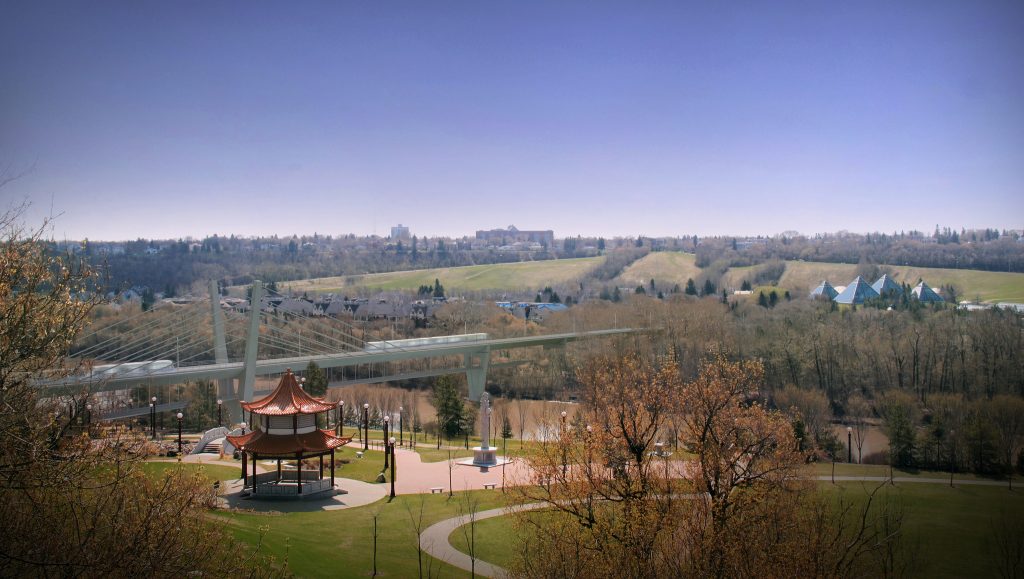As light rail transit (LRT) and other extended linear projects gain popularity across Canada, green infrastructure is finding a fit for its low-impact benefits.
But while it might be “a great marriage between landscape architecture and engineering,” going green can be complex and designers should know what they are up against.
For one, LRT and other linear projects often cross multiple jurisdictions. That means there are different authorities and stakeholders to deal with, said Charles Ormsby, in the senior engineering group of Arup Canada Inc. “They don’t always align in project sequencing and package delivery.”
Another challenge can be the topography, which might vary widely over the course of a project, Ormsby told a seminar audience recently at the Grey to Green conference in Toronto.
He said that large-scale projects — $1 billion or more — tend to be done through public-private partnerships (P3s).
The delivery method determines how quickly the infrastructure has to be designed, built and how it will be maintained. Usually the schedule is “very, very accelerated,” Ormsby said. “The reason governments and public agencies go to them is because you can get capital quickly and the project delivered quickly and efficiently.”
In P3 models, typically the designer is subordinate to the contractor. “The contractor is the one saying, ‘These are the performance requirements we have to meet…,’ ” he said.
Also important for designers to know is that a spate of change orders is a common aspect to large design-build projects, he said, citing an example of a job by Arup in which its last change order was on the day of the project’s opening.
Operations and maintenance is also different on large-scale developments, he told the seminar audience. “The relationship between the design, construction and maintenance is very closely linked, especially in LIDs (Low-Impact Developments). There is a real need to understand what that framework is when you approach the design and approach the operations and then select the actual systems.”
He said while green infrastructure in cold-weather climates poses construction and design challenges, concerns re such issues as ice build-up blocking inlets are overcome by sound design that allow for performance improvements over conventional infrastructure.
Arup is the lead designer of a green infrastructure project that encompasses a 13-kilometre light rail transit line from downtown Edmonton to a southeast suburb. The public-private partnership of the Valley Line LRT features 11 stops, an elevated guideway and station, a short tunnel and a bridge. The line is slated to open in late 2020.
The project requires stormwater management and “a multi-barrier approach to water quality” — a key factor in why green infrastructure was selected, Bailey Sadowsky, civil designer, Arup Canada Inc., told the seminar.
The LRT design stipulates that peak flow runoff can only be increased to the existing system by 10 per cent – an amount that favors green infrastructure, she said.
“It is a cost-effective means of providing stormwater storage while also achieving the collateral benefits of water quality…growing conditions for vegetation and groundwater recharge.”
Three green infrastructure measures incorporated along the LRT are a modified dry pond, soil cells and bio-retention basins – the latter of which are installed in areas vulnerable to flooding.
The aim of the basins is to shed water that normally “ponds on streets” and send it into rain gardens, Sadowsky said. “It provides a delayed release of stormwater.”
Hydraulic software models were used to verify the design’s feasibility.
A modified dry pond is installed at the base of a bridge and hill to capture and manage stormwater from the hilltop. While the pond has similar characteristics to a regular pond, Sadowsky said, it goes further with water quality treatment measures – one of which is a filtration system that limits the amount of suspended solids entering the pond.
Soil cells along the corridor provide peak flow mitigation, water quality treatment and satisfy soil volume requirements for trees, she said.



Recent Comments
comments for this post are closed